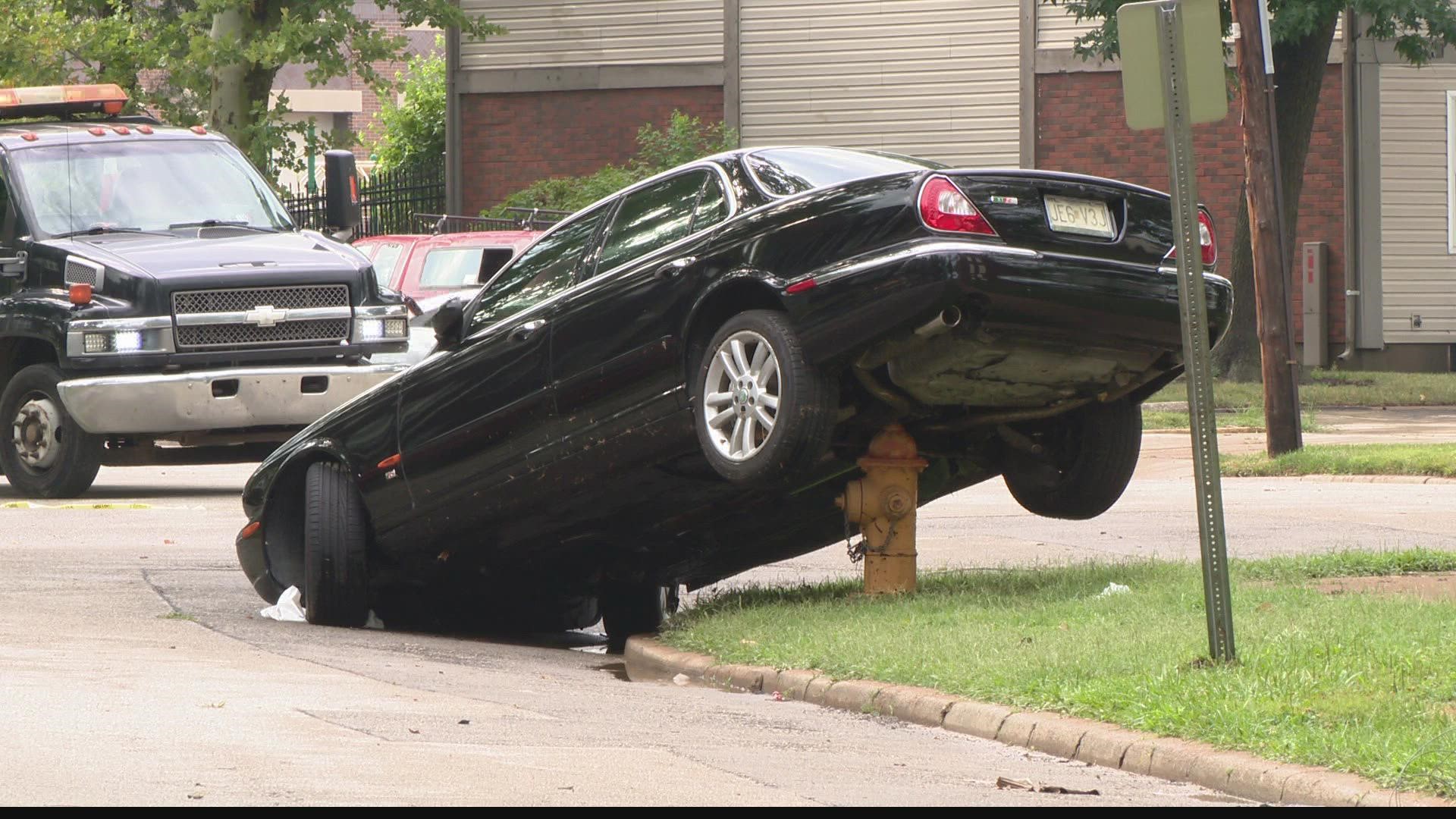ST. LOUIS — After the historic rainfall and flooding in the St. Louis area, many families are seeing the extent of the damage caused by the storms on Tuesday.
Starting the recovery process can take time and many don't know where to start.
Before reentering your home
Before you enter, look for damage to the structure of the house. Damage including cracks in the exterior, leaning of walls, and sags in the roof, can be deemed unsafe to reenter, according to the Centers for Disease Control and Prevention.
Once you have determined the house is safe, you may reenter the home.
Wear gloves, boots, and masks for protection. Bacteria and mold may be present in floodwater, be sure to wear protective equipment.
When reentering your home the CDC advises being sure to turn off the main power. Use battery-powered flashlights and lanterns.
If the main power is in a dry location, turn it off. Call an electrician to turn it off if you must enter standing water to access the main power.
An electrician should check your house's electrical system before turning it on again.
Do not enter your home until you are certain that the electricity is off, if it is not, standing water can create a shock hazard, according to the United States Environmental Protection Agency.
If there is a smell of gas, turn off the main gas valve, open all windows, and leave the house, according to the CDC.
Notify either your gas company, police, or the fire department.
Entering your home
Once your house is safe, start documenting the damage that has occurred in your home. Take photos and also contact either your landlord or insurance company, according to the Federal Emergency Management Agency.
Insurance adjusters should contact you so they may document the property damage. This would also include the structural damage and floodwater levels.
When assessing the damage, if there is standing water, it is best to remove it to lower the risk of mold and other bacteria.
Use a wet vac or submergible pump, if the electricity is safe to use, to get out the standing water slowly, according to the United States Environmental Protection Agency.
If you do not have electricity, you may use a portable generator to power equipment. If you are using any gasoline-powered tools keep the engine outside your home, preferably 20 feet away due to carbon monoxide, according to the CDC.
Cleaning Up
Once the standing water is removed, the cleanup process can continue with mopping and cleaning up damaged items.
Items including food, clothing, pillows, and medicine should be thrown away. Mold can grow after a flood in items that could soak up moisture, so it is best to throw those items away.
Protecting your home and health
To minimize mold growth, dry out the damaged area as quickly as you can.
Use fans and dehumidifiers to remove the moisture, if the electricity is safe to use. Fans must be placed near a window or door to blow out the air rather than back inside the house, so it does not spread the spores, according to the CDC.
Open up windows and doors to help dry out the area as well.
If there are mold spots as the cleaning process continues, you can use water and detergent to clean the area. Dry immediately after cleaning.
Painting over mold will not stop it from growing, clean up the mold first before making any repairs, according to the EPA.
The CDC advises to get your heating, ventilating, and air-conditioning (HVAC) system checked and cleaned if they were affected by the floodwaters. Mold may also grow in the HVAC system, if turned on it may spread mold throughout the house.
For more information on the cleanup process visit the pages below:

